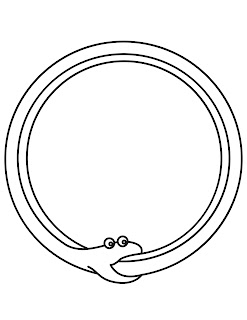 Not too long ago I worked at a local hydroponics shop. The focus
of the store was nutrients, so we didn’t have too many plants on display—mostly tomatoes and orchids—but there was an odd assortment
of other strange plants tucked away in the corners of the shop, all unlabeled
of course. One of these was a lanky herb buried beneath the tomatoes, unremarkable
save for its bright yellow flower.
Not too long ago I worked at a local hydroponics shop. The focus
of the store was nutrients, so we didn’t have too many plants on display—mostly tomatoes and orchids—but there was an odd assortment
of other strange plants tucked away in the corners of the shop, all unlabeled
of course. One of these was a lanky herb buried beneath the tomatoes, unremarkable
save for its bright yellow flower.
I’d walk past it every day, not knowing what it
was. Just some unfortunate ornamental, I figured. Then one day a customer came
in and after some time wandered toward the
plant. “Nice,” he said. “Didn’t know you guys had snakebite in here.”
“Had what?” I asked.
He pointed to the little yellow flower peeking through the
tomato vines. “Snakebite. I found it in a farmer’s market once a while back,
can’t remember the actual name. It’s used to cure snakebites apparently. Makes
your mouth numb when you eat it, too. Sort of like lidocaine.”
He broke one of the smaller leaves off the plant and passed
it to me. As soon as I bit into it I felt a strong citrus flavor, followed by a
tingling in my mouth like I’d licked a 9-Volt. The feeling was so intense that for
a moment I worried I was having some sort of allergic reaction. But just as
soon as it had come, it was gone again.
“What’s it called again?” I asked.
 In its long co-history with humanity, Acmella oleracea, or
“spilanthes,” has been called by multiple names—snakebite, buzz button,
jambu, electric daisy, toothache, to name a few. The most characteristic
aspect of the plant is, of course, the numbing-buzzing sensation produced when
one eats it. This, however, is not the only function of the herb. Spilanthes
has over the centuries been used as an ally against a variety of
maladies, from inflammation to dysentery to malaria to, you guessed it, toothaches.
In its long co-history with humanity, Acmella oleracea, or
“spilanthes,” has been called by multiple names—snakebite, buzz button,
jambu, electric daisy, toothache, to name a few. The most characteristic
aspect of the plant is, of course, the numbing-buzzing sensation produced when
one eats it. This, however, is not the only function of the herb. Spilanthes
has over the centuries been used as an ally against a variety of
maladies, from inflammation to dysentery to malaria to, you guessed it, toothaches.
With such multifaceted usage, the fact of spilanthes’s
global distribution is unsurprising.
But like all plants, it has a place of origin, and consequently a story of how
it has ended up where it is now.
An Herbal History of A. Oleracea
The toothache plant doesn’t exist in the wild—or rather, it
didn’t before its naturalization in certain areas. Rather, it is the cultivated
descendant of A. abla: A Brazilian herb sharing many of the same prized traits.
Collecting and growing Alba for some unknown amount of time,
Brazil’s indigenous peoples bred it into what we know today as A. oleracea.
From there, this new species became an important part of indigenous medicine
and food.
During the colonial period, the invasion of the Americas by
European powers introduced a radical shift in the way that flora and fauna
dispersed. The trade of plants and plant seeds via colonial trade routes was an
explosion of both intentional and unintentional species introduction in nearly
every corner of the world. It was in
this period that Portuguese explorers first brought A. oleracea to
Europe, whereby it further spread into Northern Africa and India. And
everywhere it went, it found a purpose.
Uses of A. Oleracea: Traditional and Clinical
 When I first started talking with people in the ethnobotany
community, I was given a piece of advice that I consider the most important rule on how I approach medicinals: The more alleged benefits a specific plant
has, the more skeptical one should be of its actual properties.
When I first started talking with people in the ethnobotany
community, I was given a piece of advice that I consider the most important rule on how I approach medicinals: The more alleged benefits a specific plant
has, the more skeptical one should be of its actual properties.
Throughout history, A. oleracea has been said to be a
remedy for a variety of disparate ailments, but unlike many of the other cure-all herbs
out there it has been studied extensively for its
medicinal benefits, with clinical reports often supporting what folk tradition has long said. Except snakebites, it, like a lot of alleged snakebite cures, is helpless there.
The fatty acid spilanthol is the primary active compound in
the plant, and the chemical responsible for its anesthetic effects. This,
however, is not the only function spilanthol serves. In Mali, A. Oleracea flowers
are often made into an extract used to treat malaria. In clinical studies,
spilanthol has been shown to be larvicidal, effectively
killing the larvae of Culex spp. In India, the plant has long been used
to treat dysentery, while in academic research there have been reports
of its antibacterial properties.
Then, winding back toward our point of origin, Brazil, we find the medicinal meeting the culinary with the substance known as Jambu: a concoction containing the extracted oils of A. oleracea, often used in foodstuffs as a flavoring agent. In this role, the plant’s strong taste serves as an antithesis to peppers, with the spilanthol and capsicum both complimenting and negating one another in indigenous dishes. Alongside adding a new and interesting flavor, the leaves themselves of the plant act as a sort of leafy green, with many of the same beneficial nutrients as other greens.
Of course much more could be said here about toothache
plant’s uses all around the world: its popularity as a cosmetic ingredient, its use as a flavoring for chewing tobacco in India, its documented
function of as a potent diuretic. But I’d be here all day if I tried to cover
all those bases. A cosmopolitan plant, spilanthes has found innumerable uses throughout
history, many of which have yet to be studied or are just now being researched.
Keeping this in mind, there’s one last question I’d hoped to address in this
post.
How do you grow it?
Cultivation
 |
| Seedlings, planted late-August |
Second only to light, is temperature. Being a tropical
plant, spilanthes hates the cold, and is frost-sensitive. In my experience (Zone
8b), established plants will tolerate temperatures at least as low as 40F, but
in such conditions will quit growing entirely until it warms back up. Mine seem
at their happiest when the temperature is in the low 80s, receiving direct
afternoon light.
Once optimal growing conditions are achieved, it tends to take off quick, with roots filling out in no time. Luckily, the plant has proven to take transplanting well. At the sight of their first pairs of true leaves, I took my ten best seedlings and moved them into quart pots filled with a fertile, but well-draining soil. The plant is a heavier feeder, so after they had gotten settled I used some organic vegetable fertilizer on them. No signs of nutrient burn on any plants whatsoever.
When watering, it is better to err on the side of caution,
as toothache plant doesn’t enjoy soggy soil. At the same time, however, it is
recommended to not let the soil dry out entirely, as neither does it thrive
under dry periods. The plant will tolerate some underwatering or overwatering,
but growth will be stunted as a result.
[I am still in the process of cultivating this wonderful
plant, so more will be added as I learn more of its likes and dislikes. Thank
you for your patience :) ]
Learn More
- Acmella Oleracea: The Toothache Plant
- High therapeutic potential of Spilanthes acmella: A review
- Plant Resources of Tropical Africa: Acmella Oleracea













